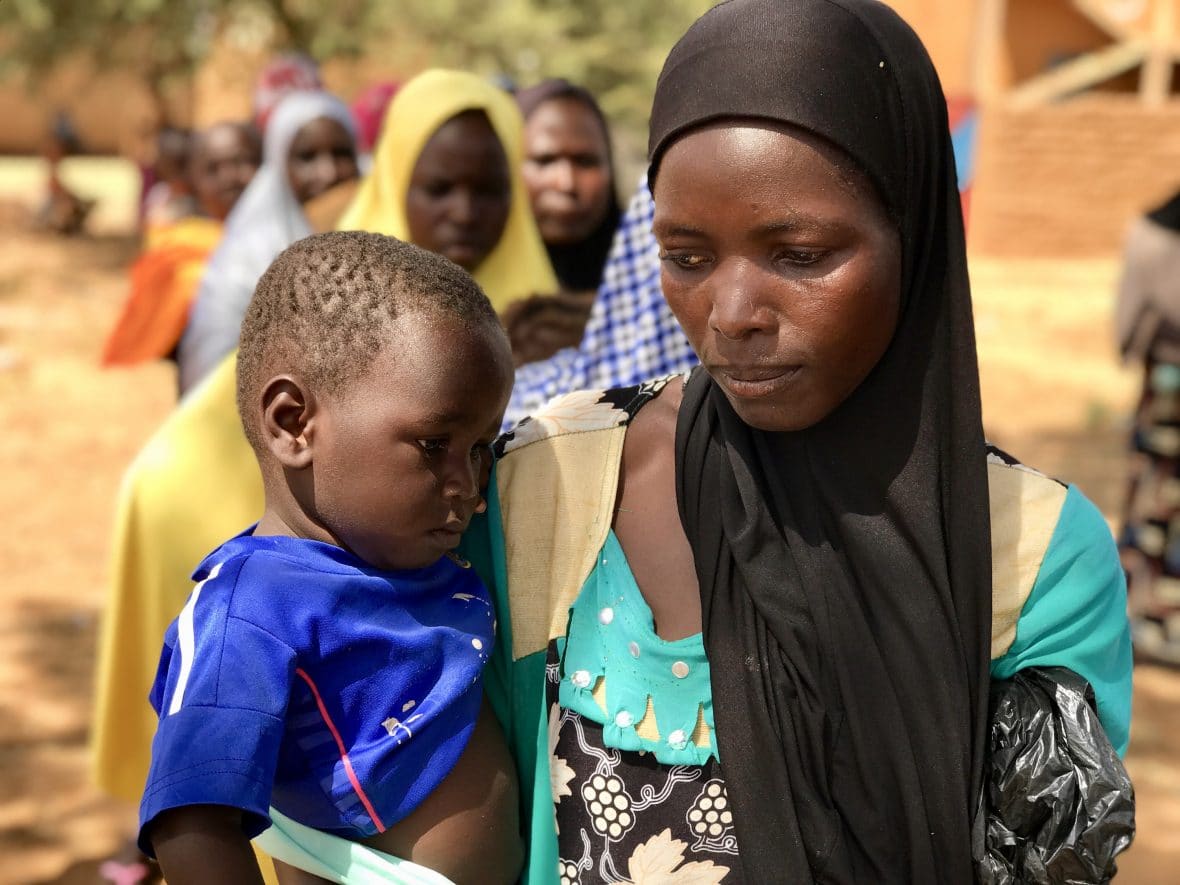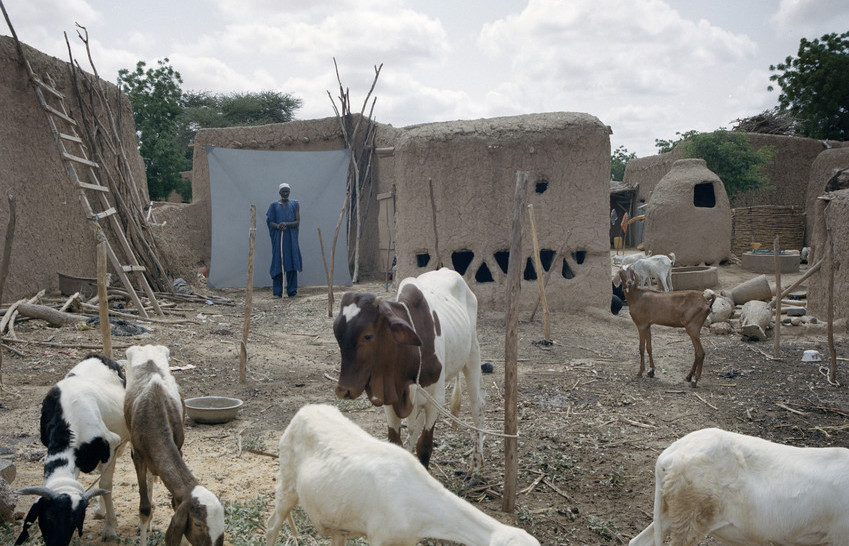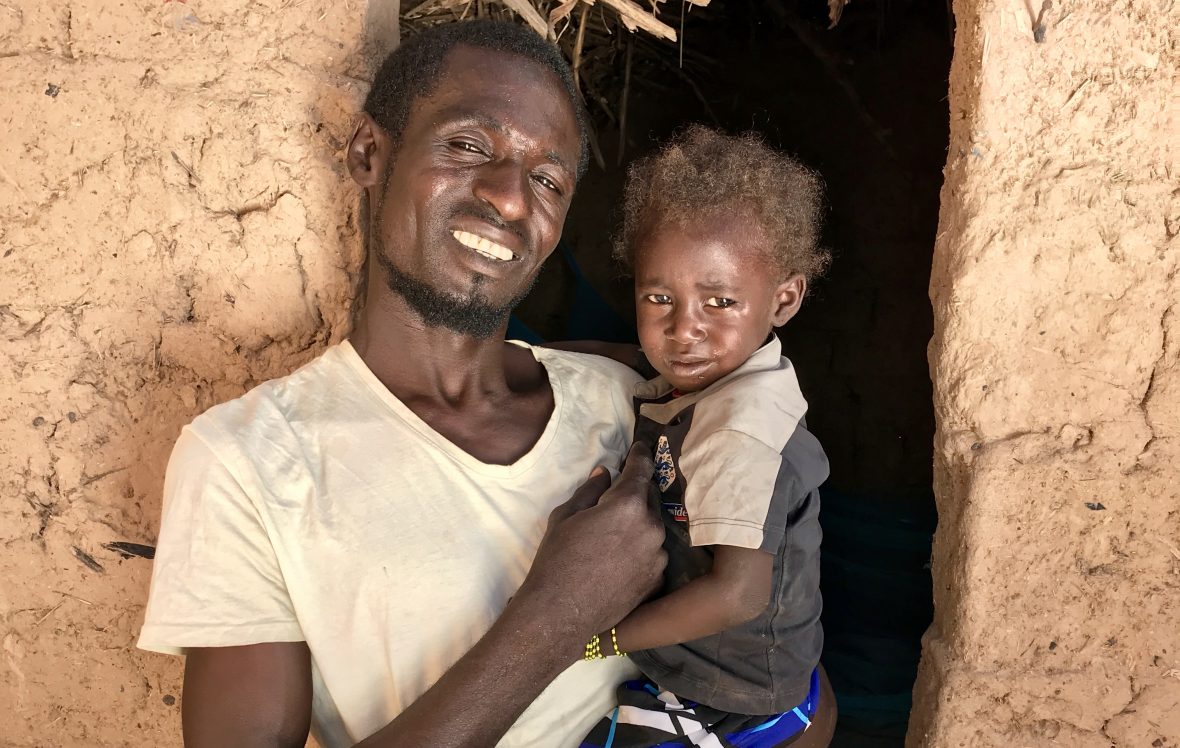News
Poverty and conflict: How to break the cycle
Conflict is on the rise globally, and it’s the single biggest driver of humanitarian needs today.
Read MoreIn Niger, millions are battling two powerful and invisible enemies: hunger and poverty. We bring you three causes, and three faces, of the crisis.
Niger consistently ranks among the most vulnerable countries in the world. The most recent World Bank data from 2014 estimate 44.5% of the country’s population of 21.5 million living in extreme poverty. The multidimensional nature of poverty in the country also creates a multidimensional nature to hunger in Niger.
On Concern and Welthungerhilfe’s 2019 Global Hunger Index, Niger ranks as the 16th hungriest country in the world. The causes of hunger go beyond a lack of available food, and tie into many of the factors that prevent tens of millions of Nigeriens from living long, healthy, and creative lives. Here’s a look at three main contributing factors to hunger in Niger. Because not all of the news is bad news, we’ll then meet three Nigeriens. Their communities are looking forward to a brighter and more resilient future — your concern will help get them there.
As of 2018, Niger’s annual population growth rate was 3.8%. It was tied for second-highest in the world with Maldives, and second only to Bahrain (4.9%). Half a century ago, the country’s population was 3.5 million. In 2018, it was over 22 million.
Such a dramatic increase in population also means a dramatic strain on public services and natural resources (especially given that 81% of Nigeriens live in rural areas and rely on agriculture for both their food and livelihoods). Niger also has the youngest population in the world: Over 50% of its 22 million citizens are 14 years old or younger. It’s not a coincidence that the country also has the highest rate of child marriage in the world, with approximately 75% of Nigerien girls marrying before the age of 18.

This, too, correlates with food insecurity. One 2018 study for the International Center for Research on Women showed that households in Niger in which the woman was married at an early age have higher levels of food insecurity, in terms of both dietary diversity and self-assessments.
One explanation for this? Educational attainment combined with gender inequality. Education in Niger consistently ranks last (187) on the UN’s Education Index, and has one of the world’s lowest literacy rates. Girls suffer this lack of education even more: In a country where the average amount of schooling is just 2 years and the literacy rate for young people is just 39.7%, men are 65% more likely to be literate than women. Educational attainment, especially girls’ education, is associated with lower levels of child stunting in Niger (and beyond).
With 80% of its population relying on agriculture, climate change threatens food security in Niger, placing additional pressure on resources and creating tension among a growing population of farmers. As part of the Sahel region of Africa, Niger is in an area that is home to 50 million people who depend on livestock, and an area that, by some UN estimates, is 80% degraded by climate change.
Temperatures in the Sahel are rising 1.5 times faster than the global average, exacerbating already high temperatures, arid land, and limited, erratic rainfall (75% of landlocked Niger is in the Sahara Desert). All of this spells trouble for farmers who face the challenge of irrigation, have pasture-reliant livestock, and often see poor crop yields.
Niger sits in a land region that, according to the UN, has been 80% degraded by climate change with temperatures rising 1.5x faster than the global average.
While this is a problem for many countries in this part of the world, Niger’s yields of dietary staples like millet and sorghum are below even regional averages. Beyond climate change and drought, its agricultural industry is highly exposed to other risks such as locust outbreaks and livestock diseases, all of which in turn contribute to lower supply and a corresponding spike in food prices.

Niger’s 528% population increase corresponded with a period in its history in which it gained independence from France in 1960, spent subsequent decades under single-party military rule, and achieved democracy in 1991. In the last quarter of a century, the country has experienced multiple coups and continuous instability, still alternating between democratic and military regimes (its current president has been in office since 2011).
With a fragile political context, social services in Niger aren’t able to fully meet the demands of its current population. This inadequacy has been especially underscored in the last decade by incidences of terrorism and armed conflict, including the 2007-09 Tuareg rebellion, incursions by violent militant groups beginning in 2015, and consequent displacement of over 50,000 Nigeriens in the Tillabéri and Tahoua regions.
This not only means more Nigeriens, but more Nigeriens competing for increasingly limited resources. With tensions already high due to climate change’s effects on agriculture, and a litany of challenging socioeconomic conditions, there is no one single or simple solution to ending hunger in Niger.
But there are several methods that, when working together, give us hope. Let’s take a look at 3 of those methods, and how they have worked for real Nigeriens.
In Gao Moussa, a village near the city of Tahoua, extreme poverty has been rampant. The region is hard hit by drought, impacting the extremely vulnerable communities that live here. During the “hungry months” of June to October, the people of Gao Moussa struggle to feed their families.
“People here rely on agriculture, and sometimes you can’t produce enough food,” says one resident of Gao Moussa, Hadijatou Cheihou. “There are always people in the community who don’t have enough food.”

In 2013, Concern launched a project that taught 30 women in the region to extract oil from peanuts, a new crop for the area. Cheihou, 57, was one of those women. She and her business partners would sell the oil at market, and use the remaining paste from grinding the peanuts to make a snack called kuli kuli, which they also sell. Prior to this project, Cheihou had tried selling millet or bean cakes, with very little profit.
Now, people travel as much as 30 miles to buy the valuable oil, and the project has made a huge difference for the whole community. “It has been a great change for us,” Cheihou explained. “The profit we make is used to buy more stock, and to help with activities in the community.”
Mika Abdu (37) is a father of 3, including 4-year-old daughter Habibah. Living with his wife and children in the rural village of Sabon Kalgo, Tahoua, his farm suffered in recent years due to failed rains that led to poor harvests. As a result, the Abdu family struggled to survive, with Habibah diagnosed with moderate malnutrition in 2017.
But Mika’s village was selected to be part of Concern’s Realigning Agriculture to Improve Nutrition (RAIN). The overall resilience project has reached over 30 villages in Niger, and helps farmers like Mika respond to new realities with Climate Smart Agriculture techniques. Using humble sack gardens (which can flourish with minimal water), Mika has been able to grow zucchini, amaranth, and cabbage in his backyard. When we caught up with him last year, a few months into the program, he was already reaping benefits.

“I wasn’t used to growing plants in a sack, it was new to me,” says Mika. “But it’s only now when I see what has been produced that I understand. I now realize that what Concern has done for us is something good. [The sack garden] provides us with additional food for us to eat.”
Mika is able to sell the surplus harvests at market, and has transformed his farm into a diverse and flourishing landscape. Even better? Little Habibah and her siblings are all happy and healthy.
In the village of Toudouni, in Niger’s Tahoua region, Balkissa Matsallabi and her husband have struggled to feed their six children. Security concerns brought on by conflict have prevented her husband from traveling to Côte d’Ivoire for work, leaving their situation all the more dire. While they grow millet, beans, and sorghum, it’s not enough for a family of eight.

The difficulties took a toll on Malika, Balkissa’s youngest daughter. At six months old, Malika grew sick and malnourished. Matsallabi took her daughter to the nearby health clinic, supported by Concern.
“I was worried we would be referred to Tahoua [around one hour drive away],” Matsallabi recalls. “Who would look after my children and the home if I had to take her there?” This echoes a worry shared by many mothers (and families) whose lives have been improved by ready-to-use therapeutic food (RUTF), administered through the program CMAM — Community Management of Acute Malnutrition.
At the health center, Malika was given a sachet of Plumpy’Nut, the first in a multi-round treatment of RUTF. “Soon she started to improve,” Matsallabi says. “She received treatment for a bit less than three months,” and by her first birthday Malika was bright-eyed and rosy-cheeked. With renewed hope, the family looked forward to their upcoming harvest.
Concern has worked in Niger for 16 years, helping communities face several daunting development challenges, which are exacerbated by terrorist incursions, migration, climate change, and excessive population growth. Poverty manifests in Niger through high levels of food insecurity, illnesses including endemic malaria, and poor access to services including water and sanitation. Crises around agriculture have compounded into hunger and nutrition issues and have affected much of the Nigerien population in the last 20 years, jeopardizing the lives of millions of people. This has led to three major crises in the last 10 years.
We launched our Integrated Resilience program in 2012 with 12 villages and 1,000 families. In 2014, we expanded to 17 more villages and now work with over 2,600 families to increase access to quality health care services and education, improve food security and nutrition, foster gender equality, and enhance livelihood systems and environmental protection — some of the main causes of global poverty.
Download the full 2019 Global Hunger Index, featuring a case study on hunger in Niger.